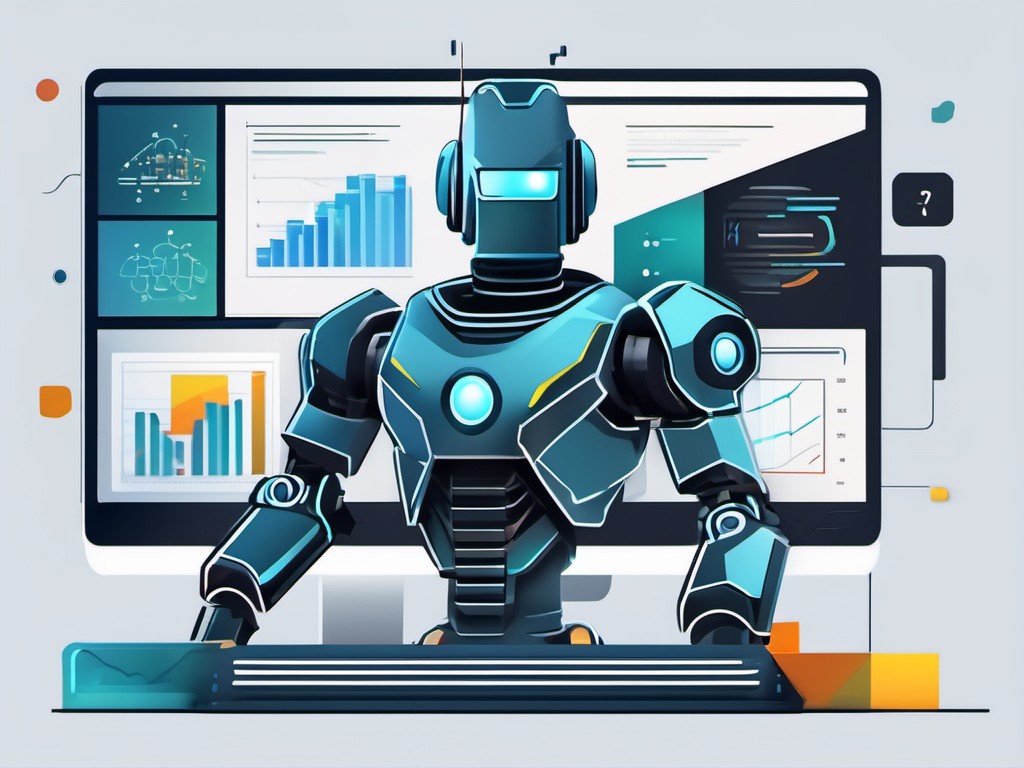· Charlotte Will · webscraping · 7 min read
Automated Pricing Strategies Using Machine Learning and Web Scraping
Discover how automated pricing strategies using machine learning and web scraping can revolutionize your e-commerce business. Learn about dynamic pricing algorithms, competitive pricing strategies, real-time pricing adjustments, and data-driven models to stay ahead in today's competitive landscape.

In today’s competitive e-commerce landscape, businesses are continually seeking ways to optimize their pricing strategies to stay ahead of the competition. Automated pricing strategies, powered by machine learning and web scraping, offer a dynamic and data-driven approach to achieve this goal. This article explores how these technologies can be harnessed to implement effective pricing strategies that drive business growth and profitability.
Understanding Automated Pricing Strategies
Automated pricing strategies involve using algorithms and software to adjust prices based on real-time data and market conditions. These strategies aim to optimize revenue, maximize sales, or achieve specific business objectives without manual intervention. By leveraging machine learning and web scraping, businesses can make data-driven decisions that enhance their competitive edge.
Benefits of Automated Pricing Strategies
- Real-Time Adjustments: Automated pricing allows for real-time price adjustments based on current market conditions and competitor pricing.
- Efficiency: Eliminates the need for manual price adjustments, saving time and reducing human error.
- Data-Driven Decisions: Utilizes large datasets to make informed pricing decisions that optimize revenue and profitability.
- Competitive Advantage: Enables businesses to respond quickly to market changes and competitive strategies.
- Improved Customer Satisfaction: Helps in offering fair and competitive prices, thereby enhancing customer satisfaction and loyalty.
Machine Learning for Pricing Optimization
Machine learning algorithms can analyze vast amounts of data to identify patterns and trends that influence pricing decisions. By training these algorithms with historical sales data, market trends, and competitor pricing, businesses can predict optimal prices that maximize revenue and profitability.
Dynamic Pricing Algorithms
Dynamic pricing algorithms use machine learning to adjust prices in real-time based on various factors such as demand, seasonality, customer behavior, and competitor pricing. These algorithms can be customized to achieve specific business objectives:
- Revenue Maximization: Adjusts prices to maximize total revenue by balancing demand and price sensitivity.
- Market Penetration: Sets lower prices to attract more customers and increase market share.
- Profit Maximization: Optimizes pricing to achieve the highest possible profit margins.
- Cost-Plus Pricing: Adjusts prices based on production costs and desired profit margin.
Implementing Machine Learning Pricing
To implement machine learning pricing, businesses need to follow these steps:
- Data Collection: Gather historical sales data, market trends, customer behavior data, and competitor pricing information.
- Algorithm Selection: Choose an appropriate algorithm (e.g., linear regression, decision trees, or neural networks) for predicting optimal prices.
- Model Training: Train the machine learning model using the collected data to identify patterns and relationships that influence pricing decisions.
- Real-Time Integration: Integrate the trained model with your e-commerce platform to enable real-time price adjustments.
- Monitoring and Optimization: Continuously monitor the performance of the pricing strategy and optimize the model based on feedback and results.
Web Scraping for Price Intelligence
Web scraping involves extracting data from websites using automated scripts or tools. In the context of pricing strategies, web scraping can be used to gather competitive pricing information, monitor market trends, and identify opportunities for price adjustments.
Competitive Pricing Strategy Using Web Scraping
By utilizing web scraping to collect competitor pricing data, businesses can gain valuable insights into their competitors’ strategies and market positioning. This information can be used to:
- Set Competitive Prices: Adjust prices to match or undercut competitors’ prices.
- Identify Price Gaps: Identify price gaps in the market that present opportunities for competitive pricing.
- Monitor Pricing Changes: Track competitor pricing changes and respond accordingly.
- Analyze Market Trends: Analyze trends and patterns in competitor pricing to inform pricing strategies.
Leveraging Machine Learning for Enhanced Web Scraping
Leveraging machine learning for enhanced web scraping is a crucial aspect of automated pricing strategies How to Leverage Machine Learning for Enhanced Web Scraping. This technique helps in extracting relevant data more effectively, which is essential for dynamic pricing models.
Best Practices for Web Scraping
- Compliance: Ensure that web scraping activities comply with legal regulations and website terms of service.
- Data Validation: Implement data validation processes to ensure the accuracy and reliability of extracted information.
- Regular Updates: Continuously update scraping scripts and tools to adapt to changes in target websites’ structures and content.
- Data Storage: Store extracted data securely and efficiently to facilitate analysis and integration with pricing strategies.
Real-Time Pricing Strategy
A real-time pricing strategy allows businesses to adjust prices instantaneously based on current market conditions and competitor pricing. This approach leverages machine learning algorithms and web scraping to gather and analyze data continuously, enabling timely price adjustments that maximize revenue and profitability.
Advantages of Real-Time Pricing
- Immediate Response: Enables businesses to respond quickly to market changes and competitor pricing strategies.
- Optimized Revenue: Adjusts prices in real-time to maximize revenue based on current demand and price sensitivity.
- Enhanced Competitiveness: Helps businesses stay competitive by offering fair and attractive prices.
- Increased Flexibility: Allows for flexible pricing strategies that can be tailored to specific business objectives and market conditions.
Challenges of Real-Time Pricing
- Technological Requirements: Real-time pricing requires sophisticated technologies and infrastructure to gather and analyze data continuously.
- Data Accuracy: Ensuring the accuracy and reliability of real-time data is crucial for making informed pricing decisions.
- Customer Perception: Frequent price changes can negatively impact customer perception and loyalty if not managed effectively.
- Regulatory Compliance: Businesses must ensure that their pricing strategies comply with relevant legal regulations and industry standards.
Data-Driven Pricing Models
A data-driven pricing model leverages historical sales data, market trends, customer behavior, and competitor pricing information to make informed pricing decisions. By analyzing this data using machine learning algorithms, businesses can identify patterns and relationships that optimize pricing strategies.
Components of a Data-Driven Pricing Model
- Historical Sales Data: Analyzes past sales performance to identify trends and patterns that influence pricing decisions.
- Market Trends: Considers external factors such as seasonality, economic conditions, and industry trends that impact pricing strategies.
- Customer Behavior Data: Utilizes customer behavior data to understand price sensitivity, demand patterns, and purchasing preferences.
- Competitor Pricing Information: Analyzes competitor pricing strategies to identify opportunities for competitive positioning and pricing adjustments.
- Machine Learning Algorithms: Applies machine learning algorithms to analyze data and predict optimal prices that maximize revenue and profitability.
Implementing Data-Driven Pricing
To implement a data-driven pricing model, businesses should follow these steps:
- Data Collection: Gather relevant data from various sources, including historical sales records, market reports, customer behavior analytics, and competitor pricing information.
- Data Analysis: Analyze the collected data to identify trends, patterns, and relationships that influence pricing decisions.
- Model Development: Develop a machine learning model that predicts optimal prices based on the analyzed data.
- Real-Time Integration: Integrate the pricing model with your e-commerce platform to enable real-time price adjustments.
- Performance Monitoring: Continuously monitor the performance of the pricing strategy and optimize the model based on feedback and results.
Conclusion
Automated pricing strategies using machine learning and web scraping offer a powerful approach to optimizing revenue, maximizing sales, and achieving specific business objectives. By leveraging these technologies, businesses can make data-driven decisions that enhance their competitive edge and drive growth. Whether implementing dynamic pricing algorithms, collecting competitor pricing information through web scraping, or developing real-time pricing strategies, the key to success lies in harnessing the power of data and machine learning to inform pricing decisions effectively.
FAQs
What are automated pricing strategies? Automated pricing strategies involve using algorithms and software to adjust prices based on real-time data and market conditions without manual intervention. These strategies aim to optimize revenue, maximize sales, or achieve specific business objectives.
How can machine learning be used for pricing optimization? Machine learning algorithms can analyze vast amounts of data to identify patterns and trends that influence pricing decisions. By training these algorithms with historical sales data, market trends, and competitor pricing, businesses can predict optimal prices that maximize revenue and profitability.
What is web scraping for price intelligence? Web scraping for price intelligence involves extracting competitor pricing data from websites using automated scripts or tools. This information helps businesses set competitive prices, identify price gaps, monitor pricing changes, and analyze market trends to inform their pricing strategies.
How does a real-time pricing strategy work? A real-time pricing strategy uses machine learning algorithms and web scraping to gather and analyze data continuously, enabling timely price adjustments that maximize revenue and profitability based on current market conditions and competitor pricing.
What are the components of a data-driven pricing model? A data-driven pricing model leverages historical sales data, market trends, customer behavior data, and competitor pricing information to make informed pricing decisions. Machine learning algorithms analyze this data to predict optimal prices that maximize revenue and profitability.




